El Amazfit Stratos 3 es uno de los últimos modelos que han llegado a la gama de relojes de Huami que, en el último año, está creciendo de forma totalmente exagerada. Amazfit tiene ahora mismo un montón de relojes como el GTS, GTR, Verge… pero la gama Stratos continúa siendo el modelo destinado a la práctica deportiva.
El Stratos 3 es la renovación directa del Stratos (o Stratos 2, según el mercado), un modelo que ya destacó en el pasado por su altísima relación precio/prestaciones, algo que ha llamado la atención a cientos de usuarios.
La receta continúa siendo la misma. El Stratos 3 es muy similar al modelo anterior y vuelve a ofrecer funciones como altímetro barométrico, métricas de Firstbeat, reproducción de música, etc.; pero ahora ha cambiado el sensor de pulso óptico por uno nuevo y más capaz además de renovar la interfaz de usuario.
He pasado unas semanas utilizando el Amazfit Stratos 3 de forma regular. En esta ocasión el reloj me lo ha prestado uno de los lectores de la página (¡muchas gracias Aarón!), que volverá a su legítimo propietario tan pronto como termine con la prueba y pulse sobre el botón de publicar.
Recuerda que si quieres colaborar con la página haciendo que estas pruebas sean posibles, puedes hacerlo con las compras a través de los enlaces que facilito. A ti no te va a costar nada más, pero el vendedor destinará un pequeño porcentaje que es lo que paga el trabajo que yo realizo.
Si te parece, voy a realizar un repaso rápido del reloj comentándote qué sigue igual que en el Stratos 2 y qué ha cambiado, y pasaré directamente a ver cómo se comportan ahora los sensores, lo que fue mi principal crítica del modelo anterior.
Navegar a secciones específicas
Amazfit Stratos 3
Funcionamiento global - 8
Posibilidades de entrenamiento - 8
Plataforma y aplicaciones - 6.5
Autonomía - 9
Acabados y comodidad - 7.5
Relación precio/prestaciones - 9
8
TOTAL
Externamente puede parecer que la renovación del Amazfit Stratos 3 ha sido menor, más en cuanto a la estética que en cuanto a funciones en sí mismas. Sin embargo las principales novedades son las que encontramos en su interior, mejorando lo que no funcionaba en el modelo original.
Lo mejor
- Sensores internos con buen funcionamiento
- Precio muy competitivo
- Interfaz de usuario renovada y mejorada
Necesita mejorar
- A pesar de la renovación en la interfaz, todavía tiene algún submenú algo caótico
- Plataforma de seguimiento de entrenamiento algo limitada
- Alguna traducción necesita un repaso
- NFC no operativo en España
Un repaso al Amazfit Stratos 3
A primera vista no hay muchas diferencias con el Amazfit Stratos que ya analicé en 2018. El bisel del reloj presenta un diseño diferente, pero lo que es más notable es que pasamos de los tres botones en el modelo anterior a un 2+2, en el que entre los dos botones principales podemos encontrar uno doble para subir y bajar en las pantallas y menús.
Huami ha preferido un diseño de este tipo para ahorrar costes, alejándose de un diseño algo más complicado como puede ser una corona similar a la que tienen los Apple Watch o COROS APEX Pro.
La caja del reloj continúa siendo de policarbonato con aspecto de fibra de carbono, algo que no me gustaba del anterior modelo y que continúa sin gustarme en el nuevo. Eso sí, la correa de silicona es mejor al tacto y más cómoda que en el modelo anterior.
La calidad de construcción es buena y destaca el uso de materiales de calidad a pesar del precio del reloj. Bisel cerámico, botones de acero, lente de cristal… al tacto da sensación de ser un producto de calidad, quizá no como un Fenix 6 o un Apple Watch, pero sí de mayor calidad que lo que su bajo precio puede hacernos suponer en un principio.
La pantalla es táctil y permite manejar la interfaz de usuario de la misma forma que los botones. Una interfaz que ha sido rediseñada y que ahora es más sencilla de utilizar, aprovechando perfectamente la pantalla táctil.
Deslizando de izquierda a derecha accedemos a las notificaciones del teléfono y de derecha a izquierda al menú de «aplicaciones» del reloj. A ese mismo menú también accedemos presionando el botón inferior.
No son aplicaciones como tal, ni el reloj permite instalar aplicaciones nuevas. Son simplemente funciones de las que disponemos que, en lugar de estar mostradas por una serie de menús y submenús se ordenan en forma de iconos.
Deslizando de arriba a abajo encontramos los widgets, pequeñas pantallas de información con detalles como presión barométrica y altitud, estado de sueño, estado de entrenamiento, etc.
Es posible activar o desactivar widgets, así como habilitarlos o deshabilitarlos, todo ello desde la configuración de la aplicación del móvil.
En este sentido el Stratos 3 mejora notablemente lo del modelo anterior, cuyo menú era algo más caótico en cuanto a su desplazamiento.
Donde no hay muchos cambios es en las prestaciones de deporte o en la configuración del perfil de deportes. Sobre esto último existen dos ajustes que debemos tener en cuenta. Uno de ellos es en las opciones del perfil de deporte en el reloj, donde debes seleccionar cuántos datos quieres en cada pantalla, desde tres hasta cinco (en el Stratos 2 podíamos llegar hasta seis).
Esta selección se aplicará a todas las pantallas de datos, lo cual quiere decir que si seleccionas tres, todas las pantallas tendrán tres. No puedes tener una con cuatro, otra con cinco, etc. Lo que sí puedes es tener pantallas de tres datos en ciclismo y cuatro datos en carrera, por ejemplo.
La segunda configuración que debemos hacer es seleccionar cuáles son los datos que nos interesa ver en pantalla. Podemos acceder al listado completo y seleccionar cuál va a estar activo o no (columna derecha) y el orden en el que aparecerán (columna izquierda).
Aquí debes contar y tener en cuenta la selección que has hecho en el reloj, para que lo ordenes en la posición que te interesa cada uno de ellos.
El número de campo de datos a visualizar no son los únicos ajustes que hay que configurar en el reloj, hay otros ajustes que se pueden configurar dentro de cada perfil deportivo y de forma independiente para cada uno de ellos. Son los mismos ajustes que teníamos en el Stratos 2:
- Autolap (bastante obvio)
- Alertas: Aviso de vuelta, de frecuencia cardíaca (por zona o por cifra) o por ritmo
- Métricas en tiempo real, que añade una pantalla adicional donde sólo muestra un indicador de frecuencia cardíaca o ritmo junto con una gráfica (sólo si está la pantalla desbloqueada)
- Datos 3D, para entrenamientos o carreras donde vayas a encontrar mucha pendiente y el desplazamiento horizontal no sea “estándar”. Desplazarse a una velocidad determinada en una pendiente del 20% no recorre la misma distancia que en llano, por lo que el reloj ajustará esa velocidad para aportar un dato más exacto considerando la pendiente. Eso sí, úsalo sólo en situaciones donde verdaderamente vayas a tener un desnivel notable
- Color de fondo, blanco o negro
Desde la aplicación también podemos crear intervalos completos. No es complicado crearlos, aunque necesita un periodo de adaptación porque no está explicado demasiado claro y las traducciones tampoco ayudan.
Se puede configurar diferentes intervalos por distancia o tiempo, y también intervalo libre hasta pulsar el botón de lap, añadiendo además un periodo de descanso y haciendo que eso se repita el número de veces que queramos. Dentro de cada intervalo podemos seleccionar ritmo o frecuencia cardíaca.
También es posible alternar distintos intervalos, por ejemplo un 4×400 con descansos y después un 4×800. Simplemente hay que ir añadiendo elementos a la lista y marcarlos para repetirlos.
En este modo las pantallas de datos son específicas (no personalizables) y no presentan mucha información, aunque realmente con recibir los avisos si estamos fuera del rango deseado es más que suficiente.
El Amazfit Stratos 3 dispone de los mismos algoritmos licenciados a Firstbeat que el Stratos 2. Huami no ha aprovechado para incorporar ninguno de los últimos desarrollos de Firstbeat o para ampliar con algoritmos ya creados con anterioridad.
Destaca el de los planes de entrenamiento personalizados. Esos entrenamientos están disponibles en el perfil de correr, y nos permite elegir entre el entrenamiento recomendado para el día (que varía en función de la carga de entrenamiento) o seleccionar algún otro objetivo de entrenamiento.
Esto mismo ya lo tenía el Stratos 2. Es un concepto similar al que tienen algunos relojes de Suunto, pero no tan avanzado como la propuesta de Polar en los Ignite y Vantage. Mi crítica sigue siendo la misma que en el pasado, es una opción que está enterrada en el menú de configuración del perfil de deporte en lugar de formar parte de las funciones principales del reloj.
Todo está basado en TE (Training Effect o efecto de entrenamiento) y depende de otras variables, como el VO2Max estimado, el tiempo de recuperación, tu historial de entrenamiento pasado, etc. Es decir, no es un plan prefijado sino que se va adaptando a medida que va aprendiendo de tus hábitos de entrenamiento.
Lo que sí ha cambiado es el sensor de pulso óptico. Huami ha dejado atrás el sensor de la Mi Band 3 (realmente malo) y lo ha sustituido por otro que simplemente a primera vista ya tiene bastante mejor aspecto.
El sensor de la izquierda es el nuevo del Stratos 3, el de la derecha es el antiguo del Stratos.
Más adelante entraré en detalle en el funcionamiento del sensor óptico.
El resumen final de entrenamiento es el mismo que anteriormente, con una cantidad de datos abrumadora. Números, gráficas, diagramas de barras, etc.
Que es prácticamente lo mismo que muestra la aplicación tras sincronizar la actividad.
La cantidad de datos que muestra la aplicación es correcta, y la plataforma ofrece información básica como puede ser la carga de entrenamiento acumulada (en valores EPOC) y una estimación de VO2max. No es demasiado, pero será más que suficiente para la inmensa mayoría de los usuarios.
Huami sigue sin facilitar el acceso al archivo de actividad desde la aplicación o compartirlo a otra aplicación más allá de Strava. Hay que desplazarse al final del resumen de actividad y pulsar sobre la opción de exportar.
Tras hacerlo estará visible en la memoria del reloj (porque de cualquier otra manera, tampoco estaría visible).
La aplicación sólo deja sincronizar con Strava, pero yo no he conseguido que funcionara correctamente. Por más que he vinculado la cuenta a través de la aplicación de Amazfit jamás he visto un archivo enviado a mi cuenta de Strava. Y lo he configurado con una cuenta diferente a la habitual, para asegurarme que no hubiese ningún incidente extraño.
No me cansaré de demandar que los fabricantes nos den un acceso fácil al archivo de entrenamiento. Son nuestros entrenamientos y actividades, nosotros debemos ser los dueños de esos archivos y tenemos que poder hacer con ellos lo que nosotros estimemos oportunos. Ese archivo es necesario porque igual lo queremos usar para plataformas de entrenamiento como TrainingPeaks o Golden Cheetah, crear una ruta, compartirlo con un entrenador… lo que sea, pero debe estar al alcance del usuario.
Se me ocurren mil maneras más sencillas de poder tener acceso a ese archivo en lugar de la que está implementada en el Amazfit Stratos 3. Pero bueno, al menos tenemos la posibilidad de hacerlo.
Tampoco me gusta que la plataforma no guarde entrenamientos muy antiguos. Sin ir más lejos, no tengo disponibles los antiguos entrenamientos que realicé en el pasado con el Stratos 2, no aparecen en mi cuenta.
La navegación de rutas no ha sufrido ningún cambio. El reloj soporta archivos GPX, que puedes descargar desde Wikiloc o crearlo con cualquier herramienta compatible. Una vez subida a la memoria del reloj, podrás acceder a ella desde las opciones del perfil de deporte.
Las opciones de seguimiento de ruta son muy sencillas, no hay ningún tipo de aviso de giro o de salida de ruta. En pantalla simplemente tendremos la ruta de puntos que debemos seguir.
También echo en falta una pantalla con un perfil de la ruta para revisar la altimetría, algo que ya se está incluyendo en muchos modelos.
Al menos el reloj cuenta con brújula magnética que nos permite girar en parado y que el mapa gire con nosotros. En cuanto al zoom permite una escala entre 50m y 5km. Suficiente para una navegación de ruta esporádica, pero si vas a frecuentar la montaña se va a quedar muy corto de funciones.
Por último está la reproducción de música, algo para lo que tampoco hay cambios. Seguimos teniendo 4GB disponibles para nuestros archivos MP3, pero no hay ningún tipo de compatibilidad para descargar listas de reproducción de Spotify, Google Play Music o similares. Es decir, muy del estilo siglo XX.
Es simple y con pocas opciones, pero al menos está ahí, lo cual es un detalle bastante importante para un reloj del precio del Amazfit Stratos 3.
Sensor de pulso óptico
El cambio más significativo que he encontrado en el Stratos 3 es el nuevo sensor de pulso óptico. Y digo que es significativo porque el anterior era realmente malo. No es que el actual sea estelar, pero al menos sí está más en consonancia con el resto de modelos del mercado, lo cual es de suma importancia para los algoritmos de Firstbeat de los que he hablado anteriormente.
Antes de mostrarte comparativas de diferentes sensores, quisiera recordar algunos aspectos básicos de los sensores ópticos.
Debes tener en cuenta que un pulsómetro de muñeca no funciona de la misma forma en todos los cuerpos. Todos somos distintos, y si además en la ecuación metemos cosas como tono de la piel, tatuajes, vello corporal… la diferencia de persona a persona puede ser bastante grande.
En mis pruebas no es que el espectro de usuarios sea muy amplio: estamos yo y yo mismo. Así que lo que a mi me funciona bien puede que a otro no lo haga, o que sea mejor.
Pero lo más importante a tener en cuenta es que hay que seguir unas pautas para llevar el sensor. Debe estar apretado (pero no que te corte la circulación), suficiente como para que el reloj no se mueva libremente en la muñeca. Dejando una separación de aproximadamente un dedo con respecto al hueso de la muñeca. Cumpliendo estos detalles te asegurarás que vas a conseguir los mejores resultados que tus condiciones pueden ofrecer.
Durante las varias semanas en las que he estado probando el Amazfit Stratos 3 he tenido oportunidad de grabar multitud de entrenamientos, de entre los cuales he seleccionado estos que verás a continuación.
Vamos a empezar con algo fácil, un entrenamiento que aunque era de cuestas, la intensidad es constante. No hay cambios importantes y los únicos cambios notables han sido por parar para cruzar alguna calle.
Para esta prueba acompañando al Stratos 3 llevaba el COROS APEX Pro, Suunto 7, Garmin Forerunner 945 con sensor HRM-Tri y el Polar OH1+ grabando de forma autónoma.
A simple vista puedes ver que hay casi total unanimidad entre las cinco gráficas, pero he señalado dos zonas sobre las que quiero hacer zoom.
La primera de ellas es esta bajada de intensidad que se produce al terminar de subir una de las cuestas y comenzar una pequeña bajada que termina en un paso de peatones, por lo que voy aflojando el ritmo.
Puedes apreciar como en la bajada de intensidad el sensor de pecho es el primero en descender (porque está midiendo y no estimando). Le sigue muy de cerca el Suunto 7 y con algunos segundos de retraso vienen los demás.
Por lo tanto el Stratos 3 está en torno a la media, con un comportamiento muy similar al COROS APEX Pro.
Esta segunda parte que he señalado al principio me ha llamado la atención por las irregularidades que en general han presentado todos los sensores. Es la única parte del entrenamiento para la que no tengo explicación.
Se trata de un punto al que llego tras hacer una zona de llaneo y posterior bajada, para después subir una cuesta al 12% aproximadamente. La intuición me dice que lo que ha alterado a los sensores ópticos ha sido la variación de cadencia. De todas formas tampoco son unas diferencias descomunales, simplemente es que se aprecia cómo en este punto hay cosas que no cuadran.
Pasamos a otro entrenamiento similar, aunque este es un fartlek en llano, haciendo algunos tramos más rápidos que otros. En la comparativa están los mismos miembros que antes, salvo que en este caso es el Garmin FR935 el que está emparejado al sensor de Garmin y se ha caído el COROS.
El inicio ha sido muy complicado para el Suunto 7, necesitando casi 10 minutos para encontrar el pulso correcto. Es habitual que el inicio de la actividad sea errático (de hecho al Stratos 3 también le ocurre), pero no suele durar tanto tiempo. Eso sí, una vez que ha encontrado la frecuencia cardíaca correcta no la ha abandonado en el resto de la actividad.
Nuevamente he señalado dos descensos de intensidad, que es el punto donde los sensores de pulso óptico siempre van a tener más complicaciones.
Y de nuevo el comportamiento se repite con respecto a lo que hemos visto en el primer ejemplo, con el Suunto 7 casi con la misma inmediatez de respuesta que el sensor de pulso en el pecho, mientras que tanto Polar OH1+ como el Stratos 3 han necesitado de algún segundo más tanto en la subida como en la bajada de intensidad.
Ahora vamos con el entrenamiento más complicado que podemos poner a un sensor óptico: series cortas e intensas. En este entrenamiento las series son tan cortas que los sensores apenas tienen tiempo de aumentar o reducir la intensidad y los cambios de cadencia son muy acusados.
Sinceramente, no espero que ningún sensor óptico pueda hacer un seguimiento correcto de ellos. La tecnología no está en ese punto todavía.
Son cuatro bloques de intervalos los realizados, ampliaré cada uno de ellos para poder apreciar mejor las diferencias.
Lo primero que llama la atención es la gráfica tan extraña que hay en el caso del Suunto 7. Es un problema de la exportación a archivo GPX y no es un problema del reloj, sino algún error de la plataforma. Ya me he encontrado con este tipo de errores anteriormente a la hora de realizar análisis de relojes de Suunto.
Sin embargo en la aplicación la representación es correcta porque tiene menor definición.
Independientemente de lo irregular del archivo y de lo que hace el Suunto 7, más o menos podemos ver por dónde ha ido aunque aparece representado de forma tan extraña.
En el primer bloque el Stratos 3 hace correctamente los dos primeros intervalos pero en el tercero ya empieza a perder la compostura, y no se recupera hasta terminar el bloque completo. El Suunto 7 por su parte, dejando a un lado los puntos incorrectos en el archivo GPX, se comporta razonablemente bien. No tiene demasiado lag ni en la subida ni la bajada de intensidad.
En el segundo bloque la situación es muy parecida, aunque aquí el Stratos 3 no atina en ninguno de los intervalos. El Suunto 7 más o menos, aunque es difícil valorarlo por las dificultades que presenta la gráfica.
Tercer y cuarto bloque es más de lo mismo. En este tipo de intervalo el Amazfit Stratos 3 no está nada cómodo pero como decía anteriormente, es normal. La tecnología no está ahí todavía.
En cuanto al ciclismo no hay ninguna sorpresa, es obligatorio el contar con un sensor de pulso externo si queremos tener buenos datos de frecuencia cardíaca, no hay otra.
Por resumir todo esto, no tiene un rendimiento estelar, pero está a kilómetros de distancia de lo que ofrecía el modelo anterior. El cambio de sensor óptico se deja notar y ahora ya se puede comparar de tú a tú con el del resto de relojes deportivos.
No es el mejor, pero tampoco es el peor. Hay momentos en los que el comportamiento es perfectamente bueno (entrenamientos a intensidad constante o leves cambios de ritmo), y otros en los que seguiremos necesitando un sensor de pulso externo (intervalos cortos, ciclismo); pero es una situación muy similar a la que tenemos con cualquier modelo de Garmin, Polar o Suunto.
Rendimiento GPS
Al igual que las pruebas del sensor óptico que acabamos de ver, las comparativas de GPS se hacen de la misma manera: con los relojes acompañándome en mis entrenamientos habituales. Llevando tanto el Amazfit como otros modelos, y comprobando dónde aparecen los problemas.
No tengo ninguna ruta definida para establecer una puntuación por el sencillo motivo que hay otros factores externos que no debemos de olvidar nunca. Cosas como nubes, hojas de los árboles o simplemente la posición del satélite pueden alterar los resultados del GPS de un día para otro. Es por este motivo por el que prefiero hacer este tipo de comparativas en lugar de tener un recorrido predefinido y valorarlo a partir de este.
Es por este motivo por el que prefiero hacer este tipo de comparativas en lugar de tener un recorrido predefinido y valorarlo a partir de este.
Vamos a empezar con este entrenamiento en el que comparo el resultado del Stratos 3 con las gráficas de los otros dos relojes que llevaba conmigo ese día: el Garmin Forerunner 935 y el Suunto 7.
A vista de pájaro no parece que haya muchas discrepancias… pero vamos a aplicar un poco de zoom para ver mejor los detalles.
En esta zona ya he superado los primeros dos o tres minutos de entrenamiento y es totalmente abierta, por lo que ya las cosas deberían mostrarse de forma correcta. En general los tres relojes se comportan bien, con alguna discrepancia de centímetros arriba o abajo, pero un buen resultado para los tres incluso en la semi rotonda que he señalado en el punto más a la derecha.
Sin embargo he hecho otra marca en la gráfica del Suunto 7. Hasta ese momento todo había ido correctamente, pero en ese punto tiene un pequeño desvío de la ruta. No le hubiese dado mayor importancia de no ser por lo que he podido ver a continuación.
Es algo que vuelve a repetir en más ocasiones. Como digo anteriormente es una zona totalmente abierta (estoy corriendo junto a la autovía), por lo que no hay nada que pueda afectar a la señal. Mientras tanto el Stratos 3 -con gráfica en rojo- como el FR935 -en azul- hacen una trazada perfectamente recta.
Aquí las cosas comienzan a complicarse porque entro en Puerto Banús y comienzo a correr entre edificios o incluso por debajo de ellos.
En la primera zona marcada a la izquierda es el Suunto 7 el que clava el trazado, mientras que el Stratos 3 se cambia de acera. Aquí ya estamos hablando de varios metros de error, aunque en general el trazado es positivo porque no hay desviaciones importantes. Es decir, ese error de posicionamiento se puede apreciar en la gráfica, pero no nos afectará apenas en cuanto a distancia total o el ritmo que nos está marcando el reloj.
Tras cruzar la rotonda hago otra marca. En ese punto paso por debajo de árboles y los balcones del edificio por lo que la recepción de señal es muy complicada, especialmente para el Amazfit Stratos 3 que es el que llevo en la muñeca derecha. En ese punto es el Garmin el que muestra alguna duda más que otra, mientras que Suunto 7 y Stratos 3 hacen una gráfica bastante recta.
En la parte inferior de esa imagen está el camino de vuelta que he hecho en la ruta. Habitualmente siempre es un sitio de recepción complicada, por la señal que rebota en los edificios y por correr debajo de una hilera de árboles. Los tres relojes se comportan correctamente en esta ocasión, aunque se puede apreciar un ligero desplazamiento a la derecha por parte del Stratos 3 y a la izquierda por parte del Suunto 7. El Garmin, que es el que queda en el centro, es el que muestra el trazado correcto.
Sigamos adelante en la ruta. En el punto que realizo el giro, bordeando una manzana, el Suunto 7 muestra alguna duda, peor es al volver a cruzar el puente donde se lía totalmente haciendo un giro bastante extraño.
El patrón que sigue es muy parecido al que he señalado al principio mientras corría en la zona de la autovía. Mientras tanto el Stratos 3 se muestra muy afianzado en la ruta.
Uno de los puntos que más utilizo en las comparativas es este pequeño giro que puedes ver en la siguiente imagen. es un cambio de dirección muy rápido, como si fuese una «chicane», donde el camino a recorrer es muy estrecho y rápidamente se ve qué reloj está más acertado.
En esta ocasión es el Suunto 7 el que clava el giro. El Stratos 3 lo dibuja antes mientras que el FR935 llega tarde a la fiesta. Sin embargo a pesar de lo bien que iba hasta ese momento, el Suunto 7 se desvía ligeramente un poco más adelante.
Segunda zona que me gusta mucho para las comparativas por los giros acusados y lo fácil que es apreciar si hay errores por parte de alguno de los integrantes de la comparativa.
En el giro de la derecha a la entrada al puente, tengo que salvar una valla que hay junto a la carretera. Para ello hay que desplazarse a la derecha alrededor de dos metros y después realizar un giro de 180º. Es un giro que tanto el Garmin como el Stratos 3 han realizado correctamente, pero que en el caso del Suunto 7 ha abierto demasiado.
El siguiente punto conflictivo es el giro que hay más adelante (en la parte izquierda de la imagen), en el que el FR935 recorta descaradamente. Por su parte el Stratos 3 se come un poco de curva y el Suunto 7 añade un metro extra.
Vamos con un entrenamiento diferente. En esta ocasión en lugar del FR935 está el FR945, y añado el COROS APEX Pro a la ecuación. El Suunto 7 permanece en una de las muñecas, porque así aprovecho a tomar datos para su propia prueba.
Esta es la misma zona de autovía en la que el Suunto 7 había tenido un comportamiento extraño en el entrenamiento anterior. Sin embargo en esta ocasión no se vuelve a repetir, así que queda en algo testimonial de un sólo entrenamiento.
Por su parte el Stratos 3 se muestra bastante sólido, tanto en las gráficas anteriores como en esta que tenemos ahora.
Sin embargo con los giros comienzan los problemas. En este punto el Stratos 3 llega bastante descolocado y se come la curva, pero porque ya lleva desde bastante atrás con la incidencia (gráfica en color amarillo). Suunto 7 y COROS APEX Pro se comportan bastante bien, mientras que el Garmin FR945 anda bastante perdido, algo que se va a repetir a lo largo del entrenamiento en más de una ocasión…
En este punto termino de subir la cuesta que he comenzado a ascender en el giro anterior. Es una calle estrecha y con árboles a ambos lados de la carretera. El COROS APEX Pro dibuja un trazado francamente bueno, el Suunto 7 recorta ligeramente la curva pero sin ser demasiado exagerado.
Los que sí hacen un recorte exagerado son el Stratos 3 (que luego se va largo en el siguiente giro) y por supuesto el Garmin FR945, que todavía no se ha enterado demasiado de qué va la historia.
Y sin embargo, en este punto es el Suunto 7 el que se separa totalmente de los otros tres relojes. Puede parecer que es el que más se ha equivocado, pero lo cierto es que es el único de los cuatro que acierta con el lado correcto de la calzada, porque estoy corriendo por la acera de la derecha.
A pesar de que tanto COROS como Stratos 3 están desplazados varios metros a la izquierda del trazado real, la gráfica que dibujan es correcta; no como el FR945 que además de estar todavía más desplazado, tiene bastantes titubeos.
Vamos a un punto muy conflictivo con un giro muy acusado. Además se trata de una subida al 15% por lo que la velocidad es muy lenta, algo que no ayuda con los datos de GPS porque los puntos están muy poco separados entre ellos.
En general los cuatro relojes lo hacen mal en este punto (como digo a causa de la baja velocidad), aunque al menos el Suunto 7 es el único que entiende bien el giro.
Aquí ya estoy acelerando el ritmo, algo que se deja notar perfectamente en todas las gráficas (menos en la del FR945 que nuevamente está bastante perdido… creo que le va a tocar un reseteo de valores porque tiene algún problema).
En esta zona de giros rápidos el comportamiento es positivo por parte de todos. Se puede apreciar una separación entre los cuatro porque llevo dos relojes a un lado del cuerpo y los otros dos en el otro. Es por eso que Suunto 7 y Garmin FR945 se muestran en un lado mientras que COROS y Stratos están en el otro.
Todo esto en cuanto al GPS, pero también quiero mostrar algún detalle del altímetro barométrico, algo que en mi Stratos 2 tampoco funcionó correctamente.
Sin embargo parece que en el Amazfit Stratos 3 ya ha quedado solucionado, por lo que al igual que el sensor óptico, el barómetro es otro sensor interno que por fin funciona como debe.
Las gráficas no coinciden porque no hice una calibración inicial. Hay una situación extraña en la que el Suunto 7 y el Garmin FR945 comienzan desde el mismo punto, se separan y poco después vuelven a unirse, pero son escasos metros de diferencia.
Pero todas las gráficas son prácticamente paralelas, algo que en el modelo anterior no llegué a ver en ningún momento.
Comprar Amazfit Stratos 3
Espero que este análisis completo te haya ayudado a decidir si es un dispositivo válido para ti o no. Todo el trabajo que realizo puedes consultarlo sin ningún tipo de coste, pero si quieres apoyar la web y con ello el trabajo que realizo, la mejor forma de hacerlo es comprar tu nuevo dispositivo a través de los enlaces que facilito a continuación.
Y si no lo compras hoy, ¡acuérdate de pasar por aquí cuando vayas a hacerlo! A través de estos enlaces no sólo conseguirás un precio muy competitivo y la mejor atención al cliente, sino que además yo recibiré un pequeño porcentaje sin que a ti te cueste ningún desembolso adicional. Eso es lo que permite que pueda seguir ofreciéndote pruebas como esta en la página.
Opinión de Amazfit Stratos 3
El Stratos 3 es un modelo bastante continuista con respecto al Stratos original, pero mejorado en los aspectos que no funcionaron en aquel modelo. Para empezar el cambio de sensor de pulso óptico era muy necesario, el que Amazfit había utilizado en el primer modelo era totalmente indigno de un reloj con una mínima intención deportiva.
También se han solventado los problemas que me encontré con el altímetro barométrico, es otra cosa que funciona como debe.
Y el resto de la receta… pues continúa imperturbable. Eso sí, el precio es ligeramente superior, pero bien merece la pena pagar ese extra (ahora mismo unos 50€) por tener un reloj que funciona como debe y que no presenta sensores de muy baja calidad.
Es un reloj que no va a satisfacer a todos los usuarios, especialmente a los más comprometidos con el deporte. Las opciones de personalización son limitadas, la navegación muy básica, la plataforma no da información avanzada, es muy limitado a la hora de incorporar sensores externos… ¿pero cuál es el porcentaje de usuarios que demanda esto? Hay muchas otras cosas que van a hacer de este modelo un super ventas, como la reproducción de música, una estética «resultona», buena autonomía, algoritmos de FirstBeat (los mismos que utiliza Garmin) y un funcionamiento básico general.
¿Un consejo para los fabricantes más habituales? Cuidado, porque ahora ya hay amenazas serias. Tanto Amazfit en la gama baja como COROS en la gama alta están empezando a llamar a la puerta, y cada vez con más insistencia.
El Stratos 3 todavía está un escalón por debajo de los grandes, lo cual no quiere decir que no puedan satisfacer las necesidades de muchísimos usuarios. Pero la distancia que los separa cada vez es menor, lo cual es una muy buena noticia para los usuarios ya que se recrudece la batalla y obliga a todos los fabricantes a mejorar su producto.
¡Gracias por leer!


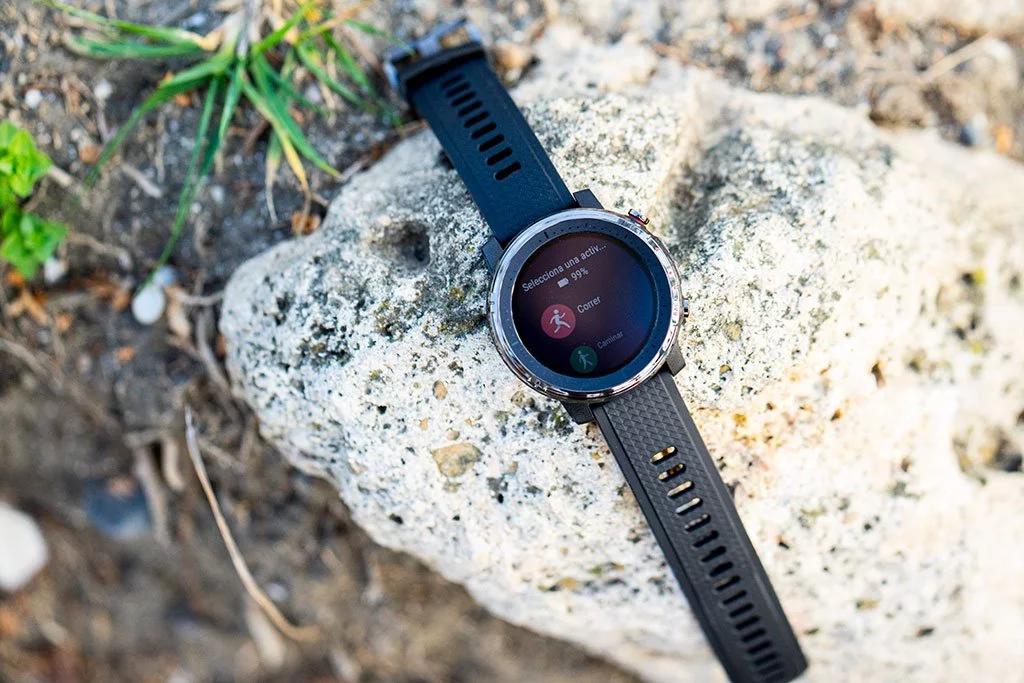






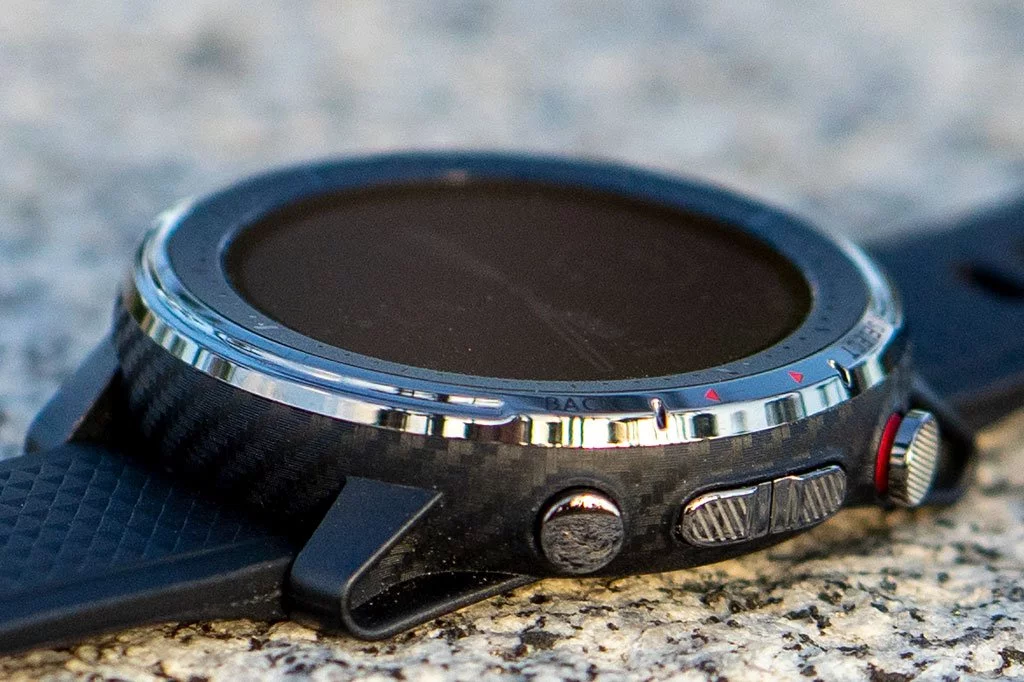
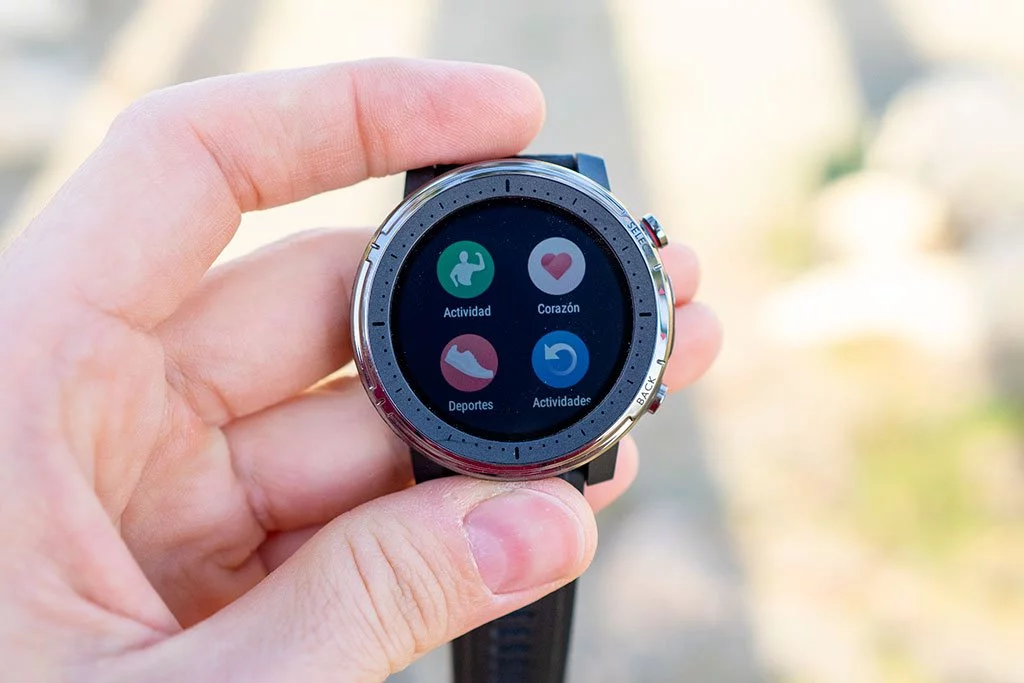
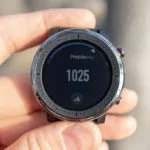
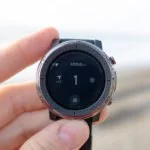
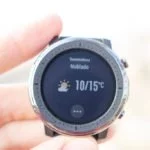
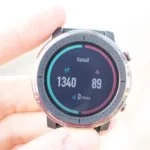
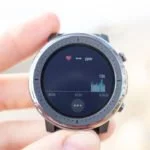
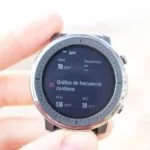

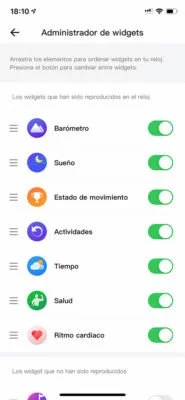
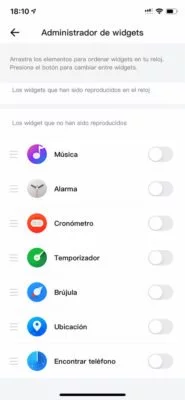
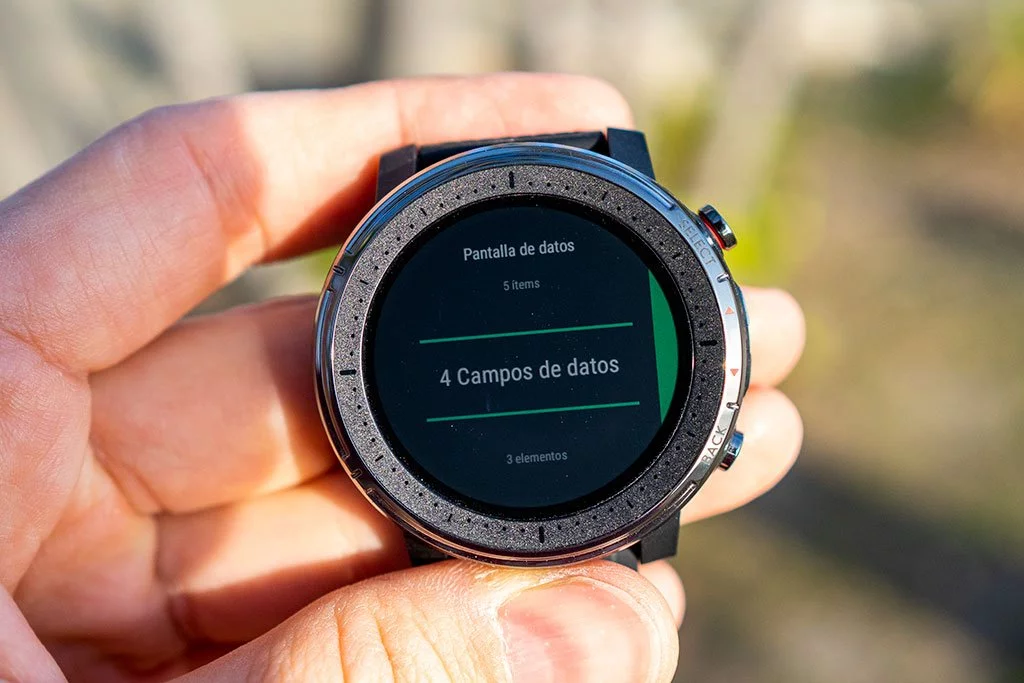
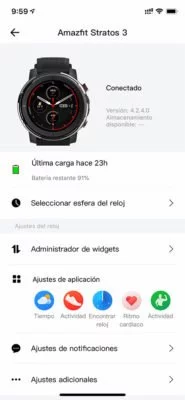

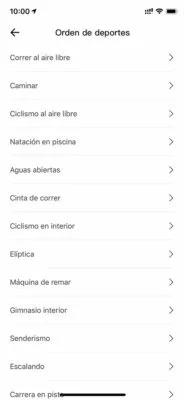
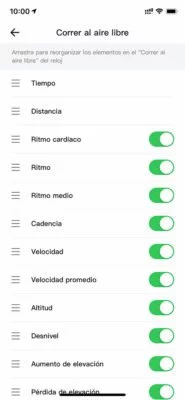
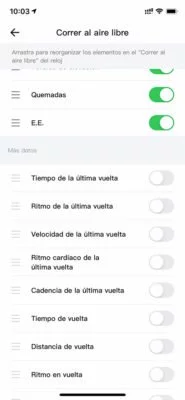


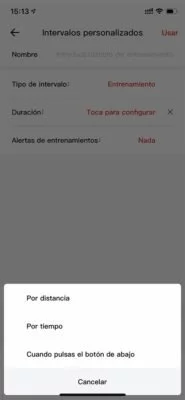
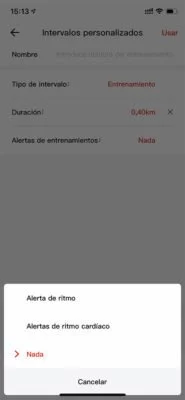
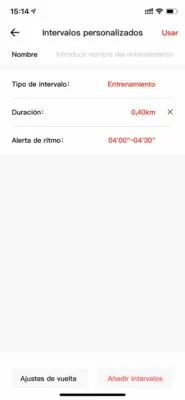
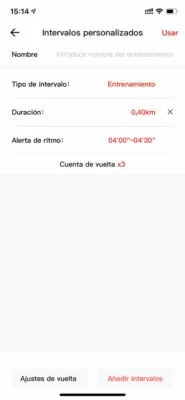
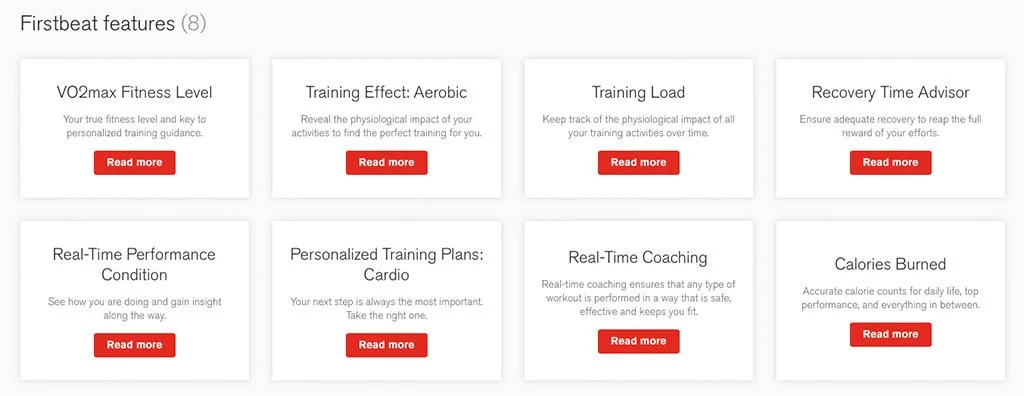
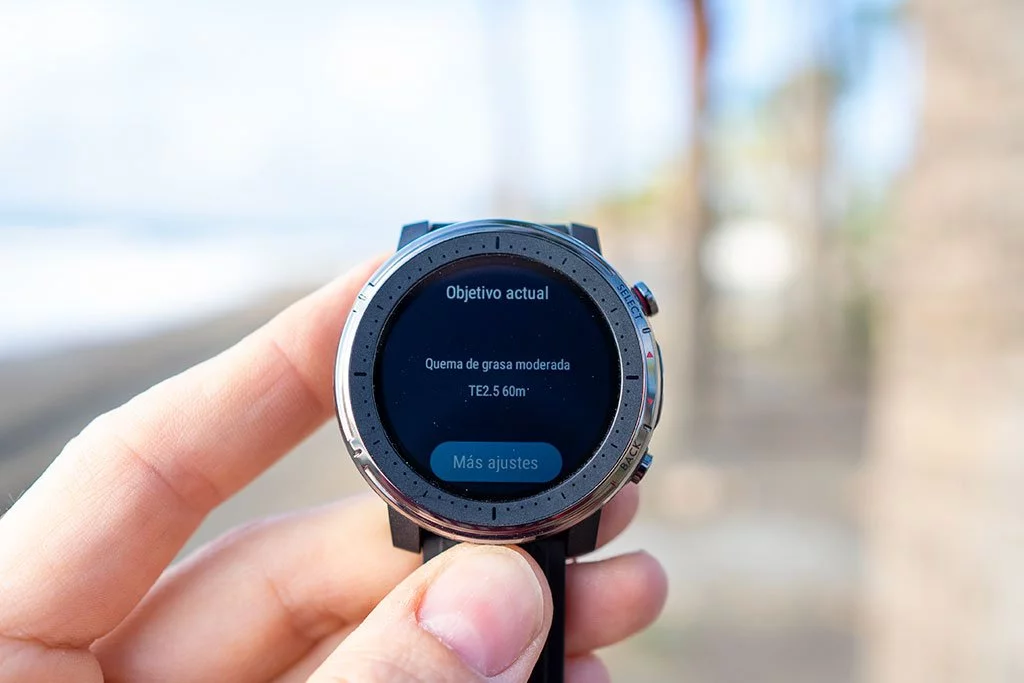
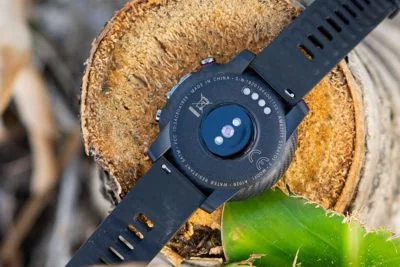
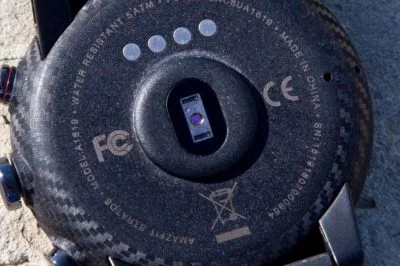
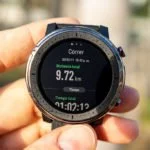
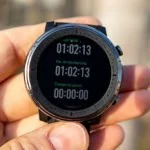
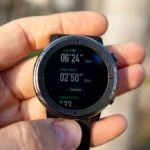

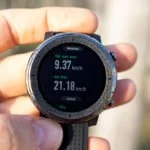
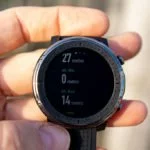
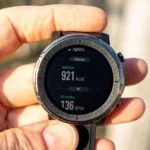
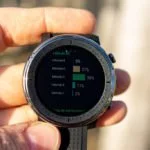
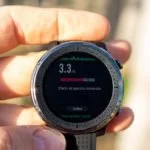
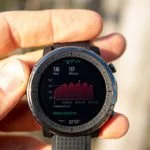
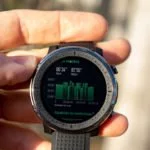
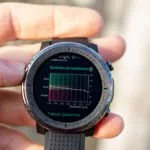
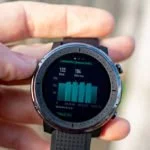
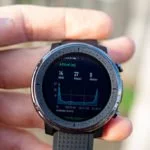
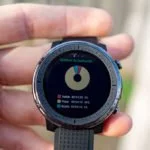
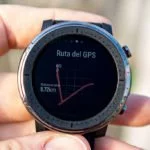
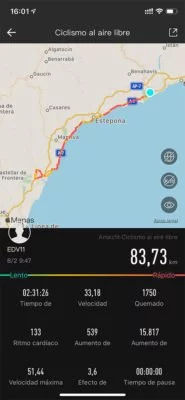
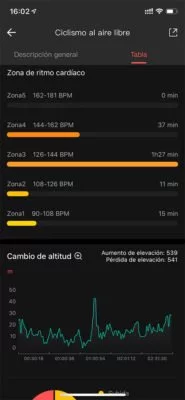
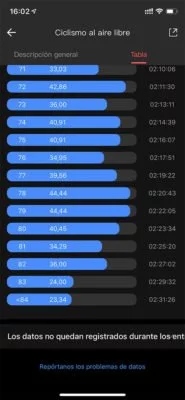

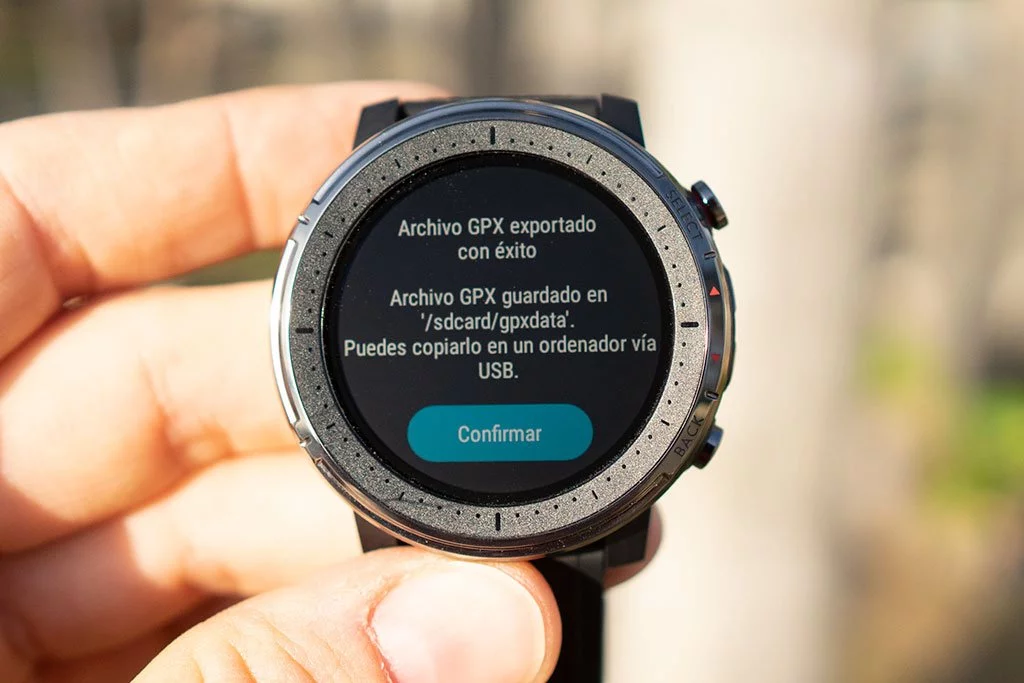
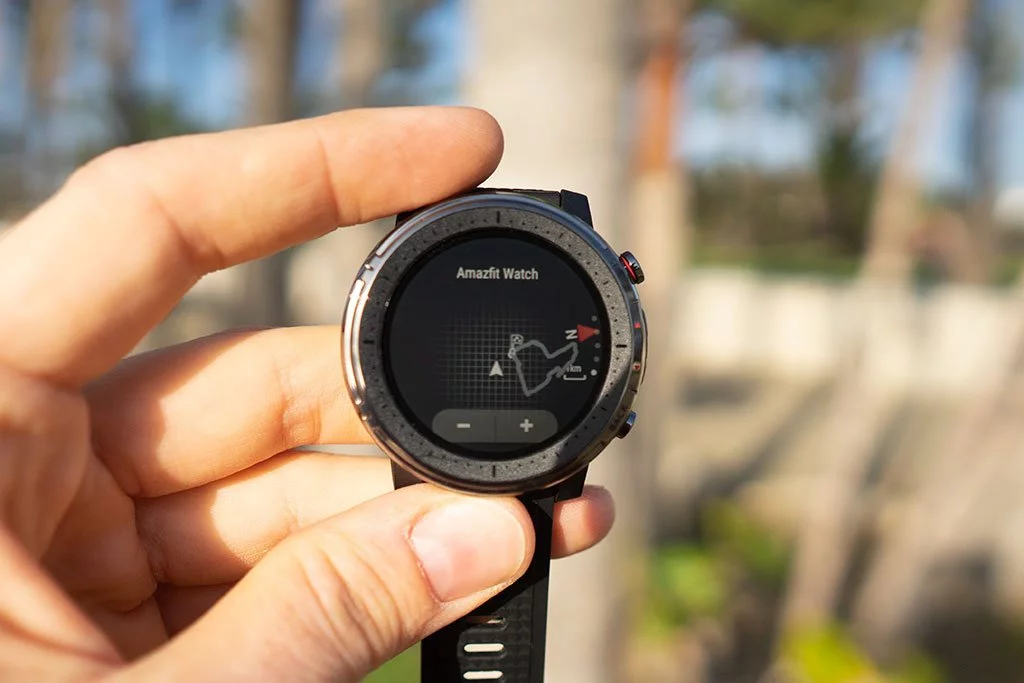











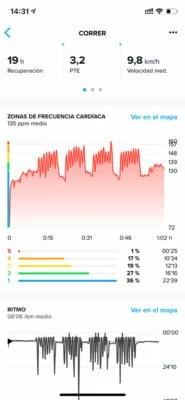
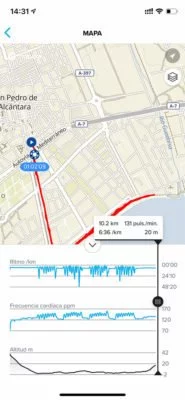

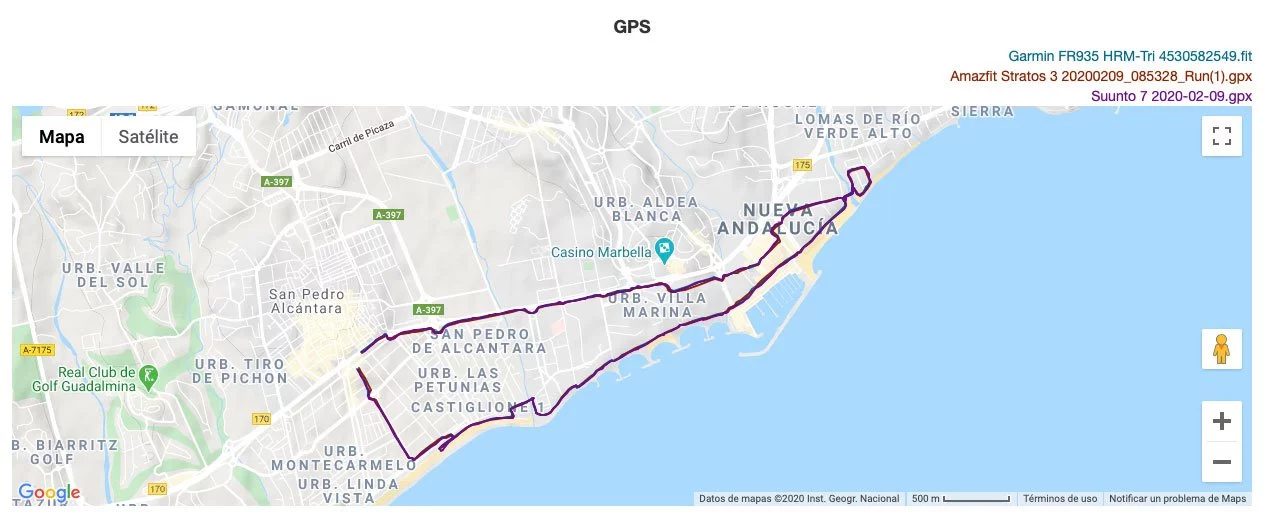






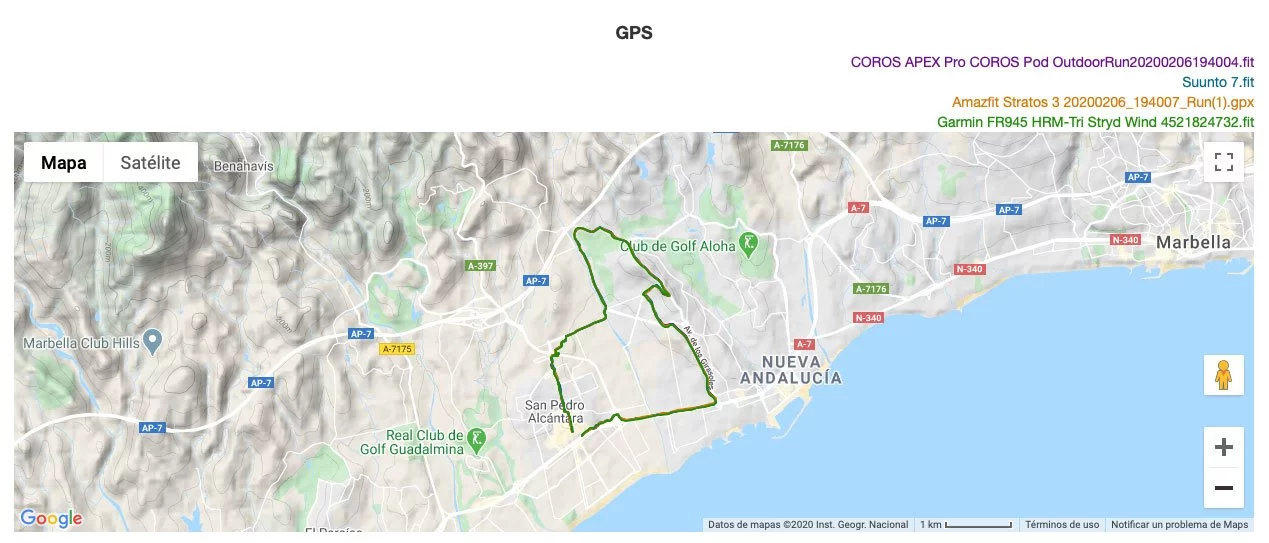
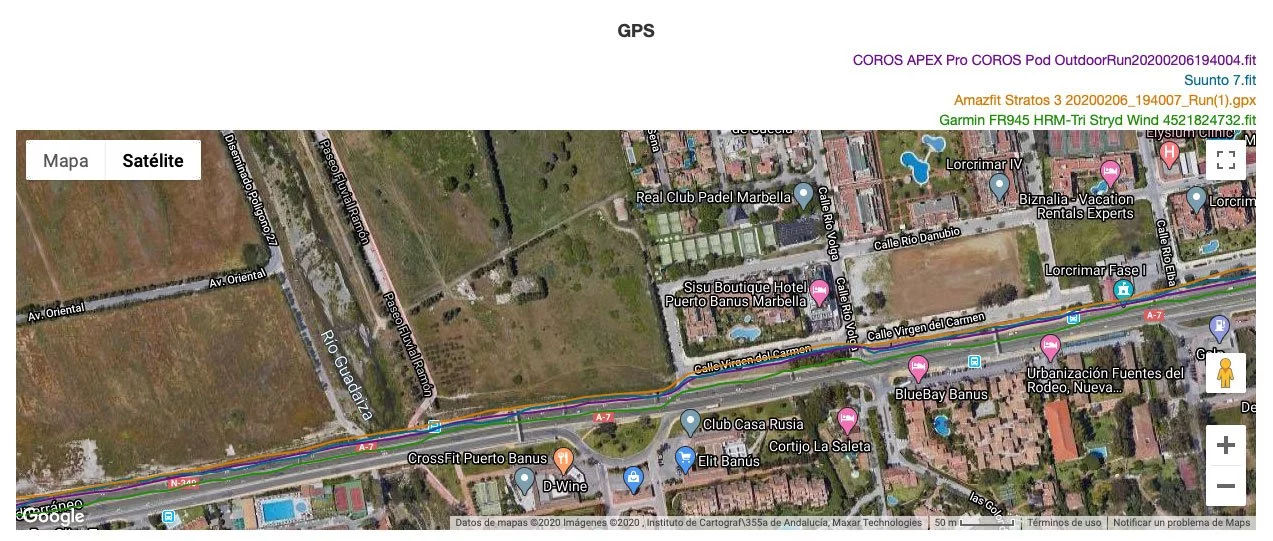







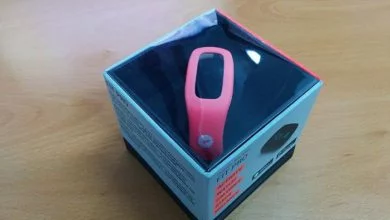
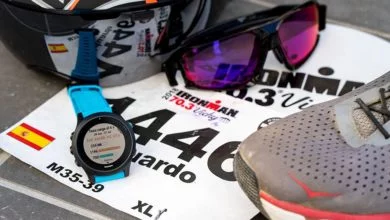
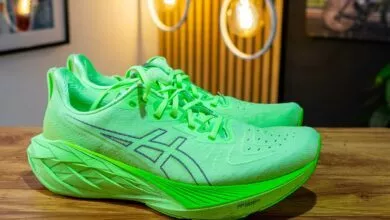
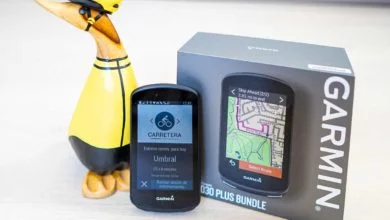
Muy buen análisis, se agradece el tiempo y dedicación.
Una pregunta, dentro del listado de deportes para medir ¿esta el snowboard o esquí ?
Practico mtb, snowboard, senderismo y eventualmente kayak.
¿Alguna sugerencia de reloj para estos deportes? estoy entre el stratos 3 o un Garmin vivoactive 3/4.
Saludos desde Chile.
Sí, está el esquí presente aunque sin funciones específicas. Remo no hay nada disponible.
Para esos deportes es mejor opción el Garmin, porque sí tiene perfiles específicos en los que separará partes (subida o bajada de esquí) o contará paladas en kayak
Excelente, gracias por la información.
Como ultima duda, en tu análisis mencionas que puedes seguir rutas GPX . ¿Puedes seguir la ruta y a la vez guardar tu propio camino?, no se si me explico bien. Ejemplo seria descargar un archivo .gpx de strava y seguir éste para no perderme en senderos de montaña, pero me gustaría guardar mi propio recorrido paralelamente.
Sí, no tienes ningún problema en hacerlo. Estar siguiendo una ruta es una cosa, y siempre que estés grabando una actividad será un archivo nuevo.
Pedazo de análisis, lo mejor que encontré en internet.
Estoy pensando en comprarme este reloj, lo que más hago es nadar y correr por montaña y conocer nuevas rutas descargadas de wikiloc.
Lo que me preocupa es que justo has puesto:
«En cuanto al zoom permite una escala entre 50m y 5km. Suficiente para una navegación de ruta esporádica, pero si vas a frecuentar la montaña se va a quedar muy corto de funciones.»
¿Sabes si se puede instalar mapas más precisos descargados, o solo se puede usar el mapa preinstalado por defecto?
¿Me podrías recomendar otro reloj de precio similar a este, con el que poder nadar y que sea algo mejor a la hora de perderse por la montaña?
Muchas gracias por toda la info, usaré tus enlances para comprarlo
No, el reloj no admite mapas de ningún tipo, ni tiene mapa.
Puedes echarle un ojo al Suunto 9, pero la versión económica no tiene altímetro barométrico. Eso sí, para hacer montaña es mucha mejor opción que el Amazfit.
Magnífico análisis, como todos. Muchas gracias. Lo compré hace un mes o un mes y algo (de hecho, antes de que se pusiera a la venta aquí) y para mí, que me he iniciado en el correr hace poco tiempo y no quería gastarme un pastizal en un reloj más avanzado hasta ver si sigo para adelante o no, me tiene bastante contento. De hecho, estaba esperando tu artículo, para comparar con mis sensaciones respecto del reloj. Es cierto que la cantidad de información que ofrece es bastante importante, con todo tipo de datos y gráficas; a veces tarda un poquito más de lo deseable en sincronizar con al señal de GPS, pero no es algo grave (de hecho, desconozco cuánto tardan los tope de gama en hacerlo); y es cierto que el GPS a veces se desvía un poco, pero en general es bastante fiable. En cuanto a las lecturas del pulsómetro, también me parecen correctas, sin desvíos extraños. Ya digo, en general, para un usuario medio, creo que puede ser una muy buena opción. Y, por cierto, tiene una gran autonomía, cosa a tener bastante en cuenta. Un saludo y gracias, de nuevo, por estos magníficos análisis.
Gracias Miguel
Hola me gustaría que me pudieras recomendar si comprar el amazfit stratos 3 o el samsung active 2? Gracias
Están algo diferenciados, depende principalmente en qué es lo que buscas del reloj. El Samsung es más reloj inteligente con funciones deportivas, mientras que el Amazfit es un reloj de deporte con ligeras funciones inteligentes.
Si es uso en deporte me fio más del Amazfit, porque sus algoritmos provienen de Firstbeat mientras que los de Samsung son «de la casa».
Hola, buenos dias.
Entre el amazfit stratos 3 que analizas aqui, y el suunto 9 que esta ahora de oferton, con cual te quedarias para un uso de triatlon y correr por montaña? Sabrias decirme si se puede controlar spotify desde alguno de ellos? (con controlar me refiero a pasar canciones y manejar volumen)
Para hacer deporte considero que el Suunto 9 es más interesante, especialmente por el hecho de tener una plataforma de deporte mucho más desarrollada.
En cuanto a Spotify, con el Amazfit sí se podría hacer, pero no con el Suunto.
Hola! En primer lugar agradecerte el enorme trabajo que has hecho en esta como en todas las revisiones. Usar el enlace de compra es lo menos que podemos hacer.
Quería consultarte.. ¿Amazfit Stratos 3 o Polar Vantage M?
Soy Corredor esencialmente, aunque alguna vez me gusta irme con la bici, mas como excursión que como entrenamiento, igual que la natación.
Del Amazfit me gusta el poder combinar en un reloj la parte deportiva y las notificaciones de móvil.
Vengo de usar durante años el Polar M400 del que no puedo estar mas contento y con el cambio me preocupan un par de cosas. La conectividad con Strava a la hora de exportar sesiones (En el M400 es automático cuando lo pones a cargar) y lo complicado que parece crear entrenamientos por laps.
¿Tu que piensas?
Un saludo y muchísimas gracias una vez más.
Si lo quieres principalmente para practicar deporte y vienes de un Polar, sin lugar a dudas me quedo con el Vantage M. El Stratos 3 no es mal reloj, de hecho mejora en muchos puntos al modelo al que sustituye, pero la plataforma no tiene nada que ver en uno u otro modelo. La de Polar es mucho más completa y válida para el uso deportivo.
Muy buen análisis, de lo mejor que he encontrado por la red… además conozco bien la zona, ya que vivo en san pedro. Yo tengo el amazfit stratos 2, lo uso para hacer rutas de MTB y la verdad que las pulsaciones ya ni las miro y lo que más me jode es el tema del desnivel acumulado, que no acierta no una. Mi pregunta es, que tal las mediciones en el stratos 3 sobre el desnivel acumulado? Es real?
Muchas gracias de antemano
Gracias Juan.
Efectivamente, tanto sensor de pulso como altímetro barométrico son dos de las cosas que se han solucionado con respecto al modelo original. Si ves la prueba del Stratos verás que encontré esos problemas.
Dentro de cómo funciona un altímetro barométrico, los datos que aporta son correctos.
Hey,
thanks for the comprehensive review! However, I can’t find anywhere (and I mean on the internet) how is the battery life with external heart rate monitor. I’ve been using Stratos 2 and it’s not very good, the battery drains fast and lasts only about 3 hours with my Sigma R1 with Bluetooth Smart technology. I wonder if you have any experinces with that with Stratos 3
Thank you in advance,
Jan
Thanks Jan.
I haven’t done any kind of tests involving the external sensor, but it should be longer than using the optical heart rate sensor, and much longer than those 3 hours you are getting.
I would reset the watch to defaults and check how is the battery life after doing it. If it keeps being the same, then your battery is faulty.
Hello
I have stratos 3 and with bt HR sensor – 20% per hour. It seems that bt connection with sensor is a hard job for the watch.
Hola Eduardo, gran trabajo. Me pregunto si a la hora de evaluar el GPS has activado la función del Stratos 3 de combinar dos señales (p ej, gps+galileo). Al parecer se gana mucha precisión en general. Lo testeaste así o solo con gps?
saludos!!
Gracias Salvador. Sí, las pruebas están hechas con GPS+GLONASS
Con Galileo no hubiera ido mejor?
Por cierto el link a amazon .es está roto..
gracias!
No necesariamente, depende de diferentes variables y la diferencia no es excesiva. Aquí tienes toda la información al respecto de GLONASS y Galileo.
Gracias por el aviso, corregido y añadido alguno más.
Muy buenas! Entre el Stratos 3 y el Suunto Spartan Trainer que está ya sobre los 200 euros, ¿cuál sería opción más fiable/interesante de adquirir? El uso deportivo que le daría sería principalmente correr. Gracias y un saludo!
Es mejor opción el Stratos 3. El Spartan Trainer tiene una pantalla demasiado pequeña comparado con el Amazfit.
Hola, muy bueno, al terminar el ejercicio con otros relojes te mide la recuperación de pulsaciones en 1 o 2 minutos. Stratos no lo tiene?
Gracias
No, esto no lo tiene el Stratos
Hola! Excelente el review, lejos el mejor que he pillado, tu pagina me ha tenido atrapado por sus buenas horas con tantos reviews de calidad.
Quería aprovechar de hacerte una pregunta! Se que las mediciones de HR de muñeca son generalmente malas, por lo que estoy buscando un reloj que me acompañe con una cinta para medir pulsaciones (Polar H10 hasta ahora). Pero pille un par de comentarios en reddit que dicen que dura 4-5 horas conectado a una cinta, cosa que para el randone (que es para lo que principalmente lo quiero) no me sirve mucho, ya que salgo por mínimo 6-7 horas. Cual consideras que son los mejores Smartwatchs para juntarlo con una cinta??
Saludos!
Gracias Ignacio
He tenido que buscar randoné en Google, la verdad es que no lo conocía.
En general, si necesitas mucha autonomía, debes mantenerte lejos de los relojes inteligentes. Tanto los últimos Polar como Garmin tendrán autonomía más que suficiente para lo que estás buscando, tanto con el sensor óptico como con sensores externos.
Hola, necesitaría saber si el Stratos 3 tiene alarma despertador y que vibre cuando suene. Muchas gracias de antemano.
Sí, se puede configurar alarma despertador.
También vibra cuando suene la alarma, no? Gracias.
Sí
Hola Eduardo, pedazo review, muy detallada. Una pregunta, ¿le ves mucha diferencia con el Coros Apex? Yo lo usaría sobretodo para montañismo y entrenamiento trail y no se si me merece la pena subir el presupuesto hasta lo que cuesta el Apex.
Gracias por la review.
Alfonso
En el aspecto básico ambos son similares, claro. Donde hay algo de diferencia es en la navegación. La de Coros es algo mejor, aunque ninguno de los dos destacan en eso. Eso sí, en cuanto a materiales y aspecto el Coros da mejor sensación.
Hola Eduardo,
lo primero agradecerte el trabajo y esfuerzo que realizas y la información tan interesante que nos das.
No te quepa duda que utilizaré tus enlaces en mis compras 😉
Quería saber (no me ha parecido verlo en la review) si es posible comenzar una ruta a partir de un punto y luego poder volver sobre tus pasos siguiéndola (backtrack).
Si no es posible con este modelo, puedes recomendarme algún otro (u otros) que sí lo permita?, básicamente necesito comenzar a caminar en un punto (p.ej. donde dejo el coche) y luego, al cabo de las horas poder volver.
Un saludo.
Gracias Carlos, se agradece el apoyo.
No recuerdo que el Stratos 3 tenga la opción de «desandar» una ruta.
Con esa posibilidad, podrías tener el Forerunner 245 (que permite también crear rutas completas), o cualquier modelo de Suunto. El Vantage M tiene también regreso a inicio, pero lo muestra con una flecha de dirección y no con una ruta.
Hola Carlos,
En el Stratos 2 sí que se puede hacer backtrack, con lo que supongo que en el 3 también estará disponible dicha opción.
Hola Eduardo,
Claramente la mejor review que he visto . Sabes si el sensor en la muñeca mide pulsaciones durante la natación sin necesidad de cinta en el pecho?
Gracias de antemano.
Salvo que haya habido algún cambio reciente del que no tenga constancia, el Amazfit no activa el sensor de pulso óptico durante la natación.
Hola Eduardo,
Gracias por la información, para las personas que no dominamos mucho es una alegría encontrar una página como la tuya con tan buenas explicaciones.
Te quería hacer una consulta. Yo he tenido un Stratos 2, bueno, de hecho 2, los dos se me han estropeado por el sensor óptico. Yo básicamente lo utilizo para natación, en piscina y aguas abiertas. Correr un poco y bicicleta. El Stratos 3 mejora algo el módulo de natación o es igual que el 2? Los datos en aguas abiertas son más fiables sí ha mejorado el GPS?
Estoy entre varios relojes de un precio similar, yo los quiero para nadar básicamente y correr, bicicleta y senderismo en montaña. Mi duda está entre Suunto Spartan Trainer, Polar Ignite, Garmin Vivo active 3, Suunto 5 y Polar Vamtage M.
¿En tu opinión, cual de ellos se ajusta mejor a mis necesidades?
Muchas gracias!
Un saludo
No llegué a probarlo en aguas abiertas (la prueba la hice en febrero…), pero no tengo constancia que haya mejorado en ese aspecto. Para natación la verdad es que optaría por otra opción.
Échale un vistazo a la guía de compra, pero de los que propones optaría por el Polar Vantage M.
Gracias Eduardo.
Saludos,
Gracias Eduardo. Tienes una página muy trabajada y muy útil para los que hacemos deporte y buscamos renovar tecnología. Te escribo para preguntarte por lo que considero un error garrafal en el stratos 3. Es tan garrafal y tan impropio de una marca internacional que tengo dudas de si es algo que estoy haciendo yo mal y me estoy yendo por los cerros de Úbeda. Por eso te consulto, como última opción antes de devolver el reloj que he comprado hace 3 días. Se trata de lo siguiente: cuando activas el crono en cualquier actividad el reloj vibra al instante. Parecería que esta vibración coincide con el comienzo del tiempo, pero no. El crono se activa entre 2 y 3 segundos más tarde. Lo he comprobado con múltiples deportes configurados en el reloj, tengan o no GPS, y compruebo que el retardo se mantiene. En algunos casos el retardo es aún mayor. Por otra parte, he configurado el visor para poder ver el tiempo de cada vuelta (lap) por ejemplo, en el deporte «Correr». Pues bien cuando veo que el tiempo de la vuelta va a alcanzar los 10 segundos, acciono otra lap. Entonces la pantalla te hace un resumen de la lap terminada y te indica, agárrate, que la vuelta duró 13 segundos. Si repites laps, siempre le añade al tiempo al que accionaste el botón, unos 3 segundos más. Cuando termino la actividad y consulto los tiempos de vuelta, efectivamente, los que muestra son aquellos que tienen 3 segundos de más. Reitero: tan fuerte me parece esto, es decir, que un reloj falle en lo más importante (la medida del tiempo) que me planteo que algo debo estar haciendo mal. De ahí mi consulta. Gracias por tu esfuerzo. Reitero, tu página es muy valiosa. Ánimo.
Gracias Juan Antonio.
Pues no te puedo decir nada al respecto, porque no tengo ahora mismo ningún reloj donde poder revisarlo…
Gracias.
Hola Juan Antonio,
Me gustaría saber si el con el reloj stratos 3, se puede vincular algún sensor de cadencia y velocidad para mi bicicleta, ya que tengo rodillo y me sería muy útil, de ser así si conoces alguno que sea compatible te lo agradecería si me indicas,
Un artículo muy interesante,
Muchas gracias
El Stratos 3 sólo permite conectarse con sensores de pulso externo.
hola Eduardo!! Tu web me ha encantado y me he leído varias reviews de algunos relojes deportivos, incluso la guía de compra, la verdad que no he encontrado una web tan completa como esta ni siquiera los vídeos de youtube ayudan tanto como tu web, mi mas sincera enhorabuena y un gran curro de cada reloj. Mi pregunta es la siguiente, viendo varios relojes, me movía entre garmin vivoactive3/4, fr245 y amazfit stratos 3, este último es el que me he comprado a atraves de tus enlaces, precio competitivo. El caso es que al poner intervalos en la actividad correr 2000+1000 o 8×300, cuando realizo el primer descanso entre series, el reloj se me pone oscuro, no se ve nada y ya solo te puedes guiar por la vibraciones de cuando empieza o termina una serie, si le doy a la botonera se me enciende pero se queda la pantalla con la numeración de cuando le he dado a la botonera, y no siguen los minutos contando (aunque sigue vibrando con las series), no sé si me he explicado. Y por más que miro en la opciones, no consigo quitarlo, porque habia una opción de encendido, pero no la realiza, en carrera continua no se apaga nunca, funciona de lujo. Así que estoy medio contento con el reloj, no se si tu realizaste series con el reloj y te ocurria lo mismo o sabes como evitar que se ponga en oscuro. Un saludo
¡Muchas gracias por tus palabras y por el apoyo a la web!
Pues creo recordar que sí hice algún entrenamiento, y no le recuerdo nada extraño… ¿estás en la última versión de firmware?
Hola! Genial review, me parece posiblemente una de las mas completas de todo internet, sigue asi. Respecto a esto, tengo una duda, estaba mirando relojes de este tipo y me ha llegado este Stratos 3 como una buena opción, pero me comentan que para entrenamiento el tema de la información se puede quedar un poco corta, ¿hay mucha diferencia respecto a otros relojes de otras marcas? las otras opciones son el Polar Vantage M, Polar ignite, Garmin Vivoactive 3 o COROS PACE. Gracias y un saludo.
Buenas tardes Eduardo. Hablas mucho se la superioridad de sunto, polar y Garmin en cuanto a ofrecimiento de información en sus apps. No podrías hacer una publicación acerca de esto? Yo estoy muy interesado en el stratos 3, recoge casi toda la información y tiene casi todas las funciones, incluida firstbeat (q supuestamente ayuda a planificar e informar acerca de progreso, descanso…) Por qué comentas a menudo que en eso el stratos 3 está por debajo de polar o Garmin? En muchas ocasiones recomiendas relojes de esas marcas que traen integradas menos funciones. No es tu caso, pero he llegado a ver páginas donde recomendaban sunto sin medición de pulso antes que el stratos 3. Si sus sensores no están mal, mide casi todo, trae firstbeat, opción de seguir tracks…. Por qué se recomiendan otros relojes de «mejores» marcas con peores funciones y características??? Como la app de polar o Garmin tiene más info si el hardware/software del reloj no se la aporta? Espero haberme explicado. Mil gracias y la página es una pasada, ya te lo he dicho más veces
Buenas tardes,
El serratos 3 permite saber la velocidad a qué vas en tiempo real, por ejemplo como el velocímetro de la bici o del coche?
O hay algún smartwatch que lo haga?
Gracias
Sí, es un campo de datos básico en cualquier reloj GPS
Dicen que se puede utilizar para nadar en aguas abiertas ( mar) crees que aguantará ese uso continuado?
Sí, el reloj es resistente a inmersión por lo que da lo mismo que sea en agua dulce o salada. Eso sí, recomendable darle un aclarado con agua al terminar en el mar para quitar toda la sal (debajo de la ducha es suficiente)
Hola Eduardo.
Excelente review, no he encontrado nada parecido ni de lejos a la profundidad y calidad de tu análisis.
Estoy reiniciandome en el triathlon despues de 6 años y busco algo bueno bonito y barato, ya que 6 años después ni la tecnología (ni el cuerpo) es lo mismo.
Me gusta mucho este amazfit, pero he visto que hablas bastante bien de la marca COROS en su gama alta.
Podrías aconsejarme cual sería el COROS equivalente a este amazfit?
Muchisimas gracias de antemano.
Saludos
Diego
Gracias Diego.
Tendrías el COROS PACE 2, que está comenzando a entrar otra vez en stock. Puedes ver todos los detalles aquí: https://www.correrunamaraton.com/en/coros-pace-2-specs-info-opinion/
Hola Eduardo, primero felicitarte por los artículos, muy completos para los que estamos buscando reloj.
Me cuadra bastante este reloj para lo que estoy buscando y en el rango de precios, pero algo que necesito que tenga es aviso a emergencias o contacto en caso de detectar un accidente ( suelo salir solo en en mtb), se que algun otro modelo de amazfit lo lleva, pero este en concreto no encuentro nada al respecto. También me cuadra el coros apex 2 pero estoy en la misma dudaypor supuesto si tuvieras alguna otra recomendacion seria bienvenida.
Saludos y gracias.
Gracias Miguel (y por la suscripción VIP también).
No me consta que los Amazfit tengan aviso de incidentes, más allá del último Bip pero que es una función de salud (y no de deporte). COROS tampoco lo tiene.
Donde sí podrás encontrar esta función es en los Garmin. Con tu presupuesto y similar al Amazfit, puedes echar un vistazo a los Vivoactive 4, que ahora están en oferta
buenas primero decirte que me parece muy buen análisis y agradecerte tu trabajo.
un pregunta con este reloj se puede poner que te avise entre un ritmo maximo y minimo en una distancia. por EJ. una distancia de 1km y que te avise si sales de un intervalo x decir de ritmo 4.00 a 4.20 ?
saludos, gracias
Gracias Jose
No, eso sería programación de intervalos con un objetivo, algo que el Amazfit Stratos 3 no tiene. Tendrías que irte a modelos de otras marcas.
Gran análisis. Muchas gracias
La próxima compra la haré a través de tu enlace 😉
Gracias Roberto
Hola,
Magnífico artículo, el mejor que he encontrado en internet.
No se si me podrás ayudar en recomendarme que reloj me conviene a mi ya que lo utilizaría básicamente para navegar (windsurf) y lo que más me interesa es que tenga un buen GPS y que mida las velocidades correctamente.
También, que pueda llevarlo a diario (no sea muy extravagante) y que tenga otras funciones ya que practico otros deportes ocasionalmente.
Muchas gracias!!
Te recomendaría uno que tenga un perfil específico para el uso que vas a darle (windsurfing). El COROS APEX Pro, por ejemplo, ha recibido este modo.
Gracias por tu información y esfuerzo, un articulo excelente.
Practico varios deportes (nada profesional) a nivel amateur (mtb,ciclinsmo carretera,natacion,senderismo,running, padel) y me gustaría que me aconsejaras algún smartwach, yo tengo visto el huawei gt2 sport
Gracias
Gracias.
Puedes echarle un vistazo al Honor Watch GS Pro.
Hola, que tal la posibilidad de probar Xiaomi mi watch, Samsung Galaxy watch, oppo watch, un saludo!
Hola, mi polar vantage v me está dando problemas en natación en piscina, estoy pensando en alguno para sustituir bien sea estilo smartwatch y para mientras se arregla o bien si al final lo cambio y visto lo visto no quiero gastar mucho, a priori no quiero pasar de 300 € , que valga para nadar en piscina, mar, triatlón y no pese mucho, un saludo
Buenas, muchas gracias x toda la información, me gustaría saber si para el triatlón si podría utilizar este reloj, me estoy iniciando en ese deporte y otras marcas se me van del presupuesto, alguna sugerencia???
De nuevo muchas gracias…
Sí, el Stratos tiene perfil de triatlón, pero no sería el reloj que elegiría para este tipo de deporte.
Con las ofertas que acaban hoy (puedes verlas aquí: https://www.correrunamaraton.com/ofertas-amazon-garmin-polar-suunto-junio-2021/), te recomendaría el Polar Vantage M
Hola, en primer lugar gracias por tu trabajo. Me interesa mucho el altímetro, parece que vale la pena para calcular el desnivel pero no me ha quedado claro si tiene una buena precisión en estático también (lo supongo pero mejor si me aclaras) gracias!
En estático depende de la presión atmosférica. Aquí puedes ver cómo funciona el altímetro barométrico.
Buenas noches, soy totalmente incapaz de conseguir que se vean los km que vas recorriendo durante el día. Sólo me guarda los km de cuándo entreno o lo pongo en modo actividad y elijo deporte.
Me puedes ayudar?
Muy buen análisis.
En el modo de actividad diaria registra los pasos, pero no habla de distancias. Sólo registra distancias al usar GPS.
Hola. Después de leerle, me decidí a comprarlo por su enlace hace unas semanas. No he escrito antes para ver realmente las prestaciones en mis actividades cotidianas si eran tal y como usted menciona. He de decir que me ha sorprendido muchísimo para bien. Vengo de Polar y luego Garmin ya hace bastantes años, buenísimos los dos, pero para mí, los encuentro algo caros. Por tanto, buscaba un reloj con pulsómetro y que me permitiera meterle y seguir tracks con facilidad a un precio más asequible y con una calidad aceptable. Amazfit Stratos 3 tiene todo lo que necesito, es excelente por precio (su enlace 109€), durabilidad de la batería (asombroso), prestaciones muy similares a Polar y Garmin de hasta 400€, facilidad total de uso, vinculación con la app y a decir verdad, lo que más feliz me hace es ver con total claridad la lectura de datos en la pantalla corriendo y sin gafas por mi edad, de día o de noche. Le quedo a usted tremendamente agradecido por su información veráz, un saludo.
Muchas gracias
Buenos días, estoy indeciso entre comprar el Amazfit gtr 47mm o el El Amazfit Stratos 3 Smartwatch, que me puedes decir acerca de estos dos modelos, tiene alguna ventaja el comprar el GTR o es mejor sin duda el Stratos 3?
Según tus comentarios compraré uno o el otro. Hay algún enlace que me puedas aconsejar a la hora de comprarlo por si hay alguna oferta o descuento.
Muchas gracias, ya me dices algo.
Una página muy bien elaborada, con información muy detallada, ya la pasé a todos mis contacto.
Si lo quieres para practicar deporte, el Stratos está más enfocado a ese uso, principalmente por su pantalla que se ve mejor al aire libre. El Amazfit GTR, aunque muy similar en prestaciones, es más un reloj inteligente con funciones deportivas. Pero no creas que hay grandes diferencias entre ambos más allá de la tecnología de la pantalla.
En cuanto a la compra, sin duda directamente en la página oficial es donde más baratos los vas a encontrar ahora, tanto el Amazfit Stratos como el Amazfit GTR 47mm.
Muchas gracias Eduardo por tu contestación. Solo una duda más.
¿A que te refieres con que el GTR, es más un reloj inteligente?.
¿Cuáles serían esas funciones inteligentes que tendría el GTR, que no tendría el Stratos?
Muchas gracias por tus aclaraciones, nos son de mucha ayuda.
Un saludo
Me refiero en cuanto a diseño del reloj, botones y uso de pantalla. No he probado el GTR, pero tanto software como app van a ser todo muy similar.
Muchas gracias Eduardo por tu contestación. Solo una duda más.
¿A que te refieres con que el GTR, es más un reloj inteligente?.
¿Cuáles serían esas funciones inteligentes que tendría el GTR, que no tendría el Stratos?
Muchas gracias por tus aclaraciones, nos son de mucha ayuda.
Un saludo
Yo lo compres en noviembre del 2019 , para ayudarme a prepara y hacer dos maratones 2 media maratones , pandemia incluida y genial , contentísimo, a pesar que la ultima media maratón de bcn2022 estando al 80% , me hizo un amago al decirle guardar y se reinicio y apago…… actualmente después de 30 mese de su compra la batería esta off y cuesta mas reparar que comprar uno nuevo
resument 186€ (tengo factura de que es original) me ha durado 30 mese.